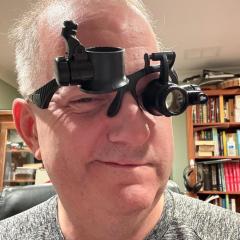ETA 2824 Hairspring
-
Recently Browsing
- No registered users viewing this page.
-
Topics
-
Posts
-
By Michalzeszen · Posted
I had a feeling the worst would happen, and it did. The smallest pressure applied to the crown broke one side of its little leg. I think I'll replace it with a traditional system if possible. This, I believe. I'm shocked at how expensive the parts for this model are. -
By HectorLooi · Posted
It might be the arbor of one of the train wheels slipping. Remove the balance wheel but leave the pallet fork in place and wind until there is slippage. Obseve which wheels turn and which wheels don't. And yes, the most obvious. Is the mainspring wound in the correct direction? -
Andy - Yes, indeed this is the one that I have. When inspecting it, I thought it should come out directly without removing the bezel (I do have a press), but I really wanted to get confirmation before proceeding. Thanks a heap!
-
This is a positive development, especially if it holds in both horizontal positions.
-
Good question. I went back and checked, and it looked like it had been reduced, but not as much as I had hoped. So I took off the balance assembly, removed the hairspring, mounted bridge, tried to bend some more, then retested. Not much change, again. I did that five more times, each time trying to apply more force. There’s now less end shake, but I’m reluctant to push it much more. As you pointed out, these bridges are surprisingly strong, thus hard to bend, thus hard to control how much force I’m applying beyond a certain point. In the free oscillation test, I’m now up over a minute (sans shim), which is getting us back towards where we started before embarking on the exercises of oiling and bending.
-






Recommended Posts